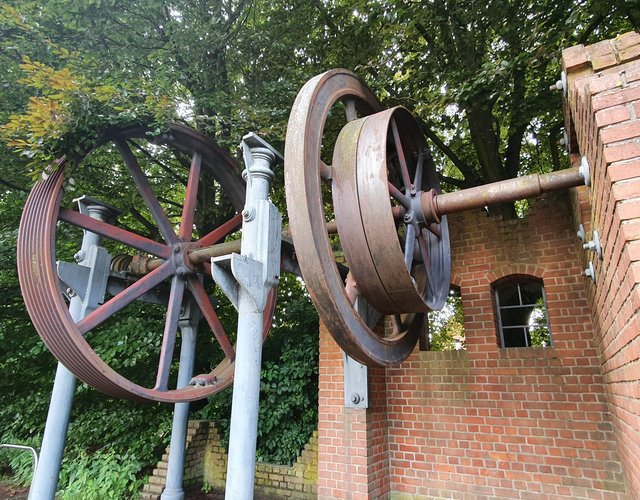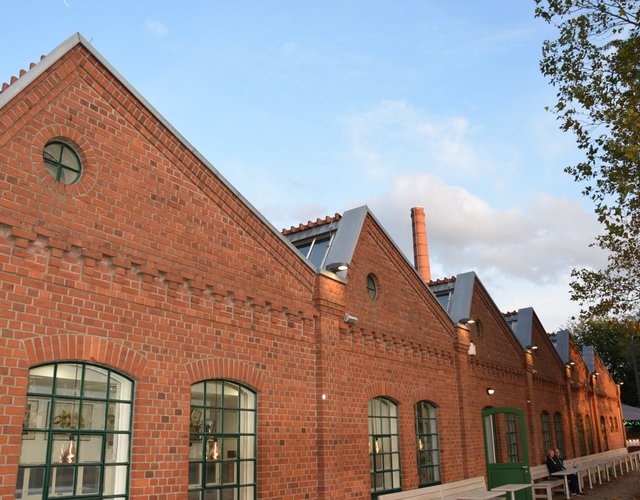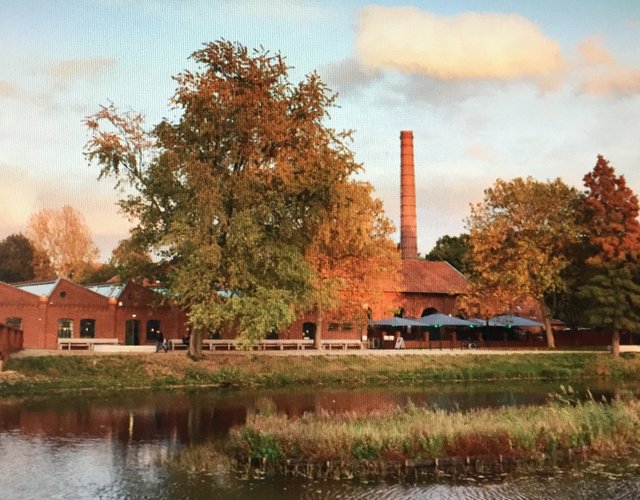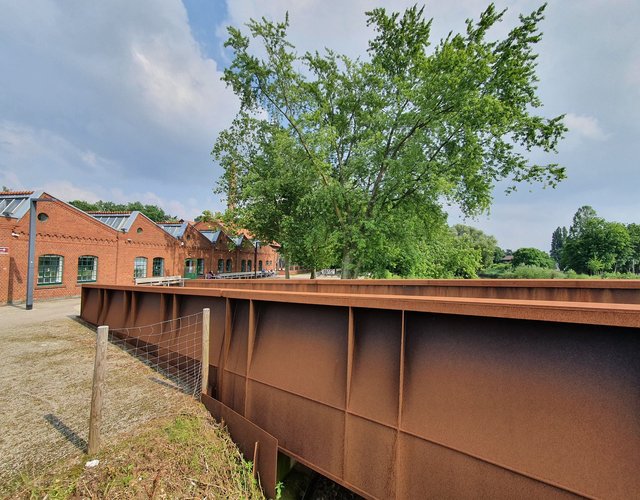- Home
- Route Ironwork
- textilmuseumkubaaibocholt
Museum Textilwerk - Kubaai
Uhlandstraße 50, 46397 Bocholt
When spinning and weaving were still domestic crafts, spinning wheels and looms were made of wood. When cast iron became available, spinning and weaving machines could be built faster and stronger. After all, the cast iron frame could be cast in series production. Parts such as the turning mechanism (gears, cogs, etc.) could also be made easily and quickly using cast iron. Machines could be built with which the superstructure (consisting of many iron rods, bars, wires) could be produced more precisely and more quickly.
Initially, the machines were driven by a single source of power, a steam engine, also largely made of cast iron, which could drive a whole series of machines.
When electricity became available, initially self-generated via a power source with accumulators, each machine could be given its own drive, which allowed for a huge increase in production. This heavily impacted the textile industry with its constantly repeating movements.
Cotton spinning and weaving have a long tradition in Bocholt. For more than 450 years, the fibre, which has to be imported from abroad, has shaped the economic life of Bocholt and the entire region. The industry flourished between 1870 and the First World War when Bocholt had up to 80 textile companies, some employing up to 10,000 people. With almost 600 looms and 23,600 spindles, the Herding "Spinnweb" was one of the largest textile companies in Bocholt for a long time.
In the mid-1960s, the structural crisis also took hold in Westmünsterland, characterised by an ongoing shrinkage due to increasing competition from the Far East. Many companies closed down, and thousands of people lost their jobs.
Amid the structural crisis, the LWL landscape assembly decided to establish a textile museum in 1984. As there was no historical building available, the first decision was to recreate a typical weaving mill from the turn of the century. In 1989, the opening was celebrated on the Aa.
With financial support from the government, the district of Borken, the city of Bocholt and the Stadtsparkasse Bocholt, the regional association of Westphalia-Lippe purchased the four-storey brick building of the Herding spinning mill as a second part of the textile museum in 2004. The renovation started in 2009 with funds from the economic stimulus package II. Since the opening of the spinning mill in September 2011, the textile museum with its two locations functions as the "TextilWerk Bocholt".
Kubaai is the urban cultural district on both sides of the Bocholter Aa between the city centre and Aasee, Industriestrasse and Don-Bosco-Strasse.
Where old production halls and spinning mills, machine shops and remnants of chimneys bear witness to a long-ago flourishing Bocholt textile production, people will work and live in an urban district, spend their leisure time and experience culture.
Places of interest in the area
Hulvershorn is the last former iron foundry on the route. If you continue to the endpoint, you will arrive at:
Restaurant Schiffchen, at Museum Weaving Textile Museum, Uhlandstrasse 50 - Bocholt
Enjoy tasty seasonal, regional and international dishes in the historic ambience of the Bocholt Textile Museum at Museum Restaurant Schiffchen.





